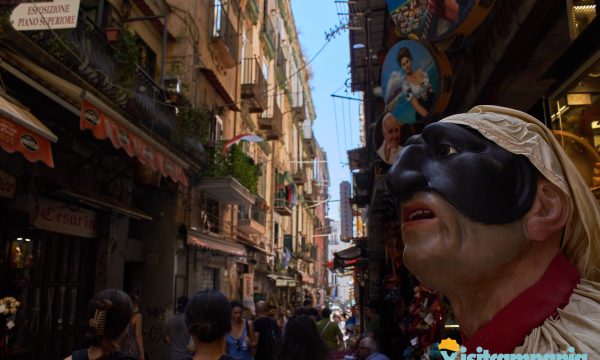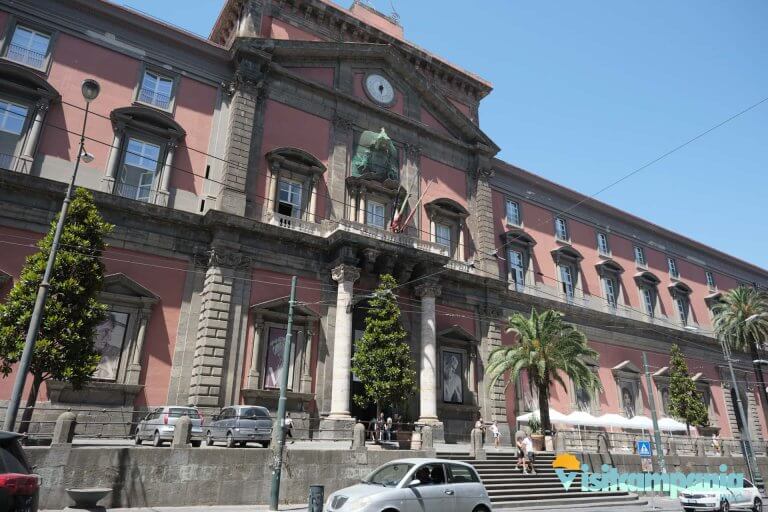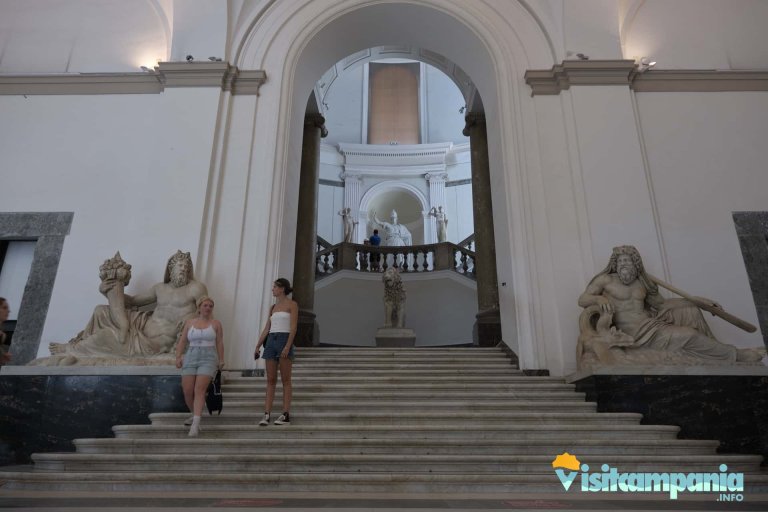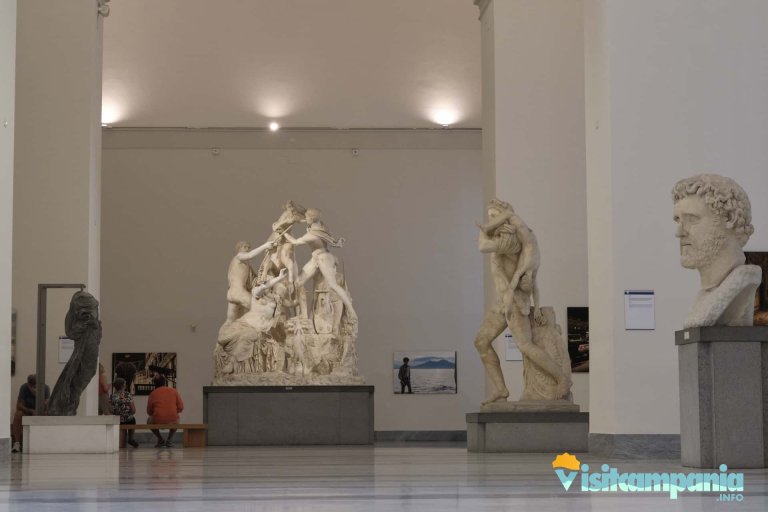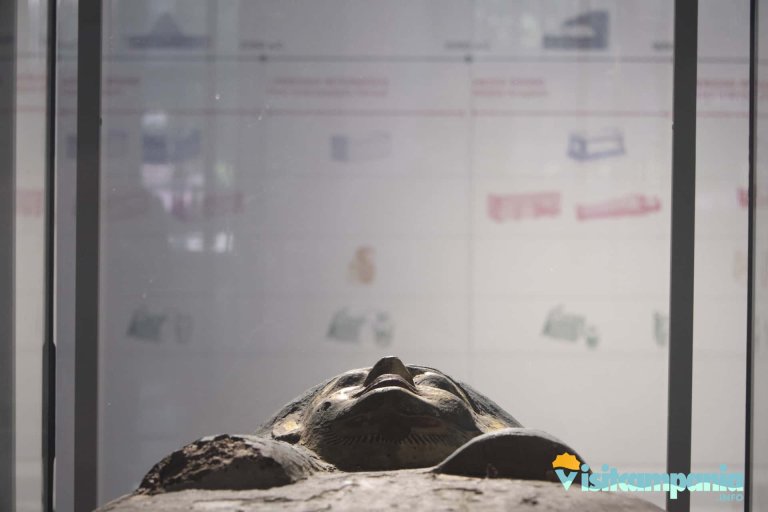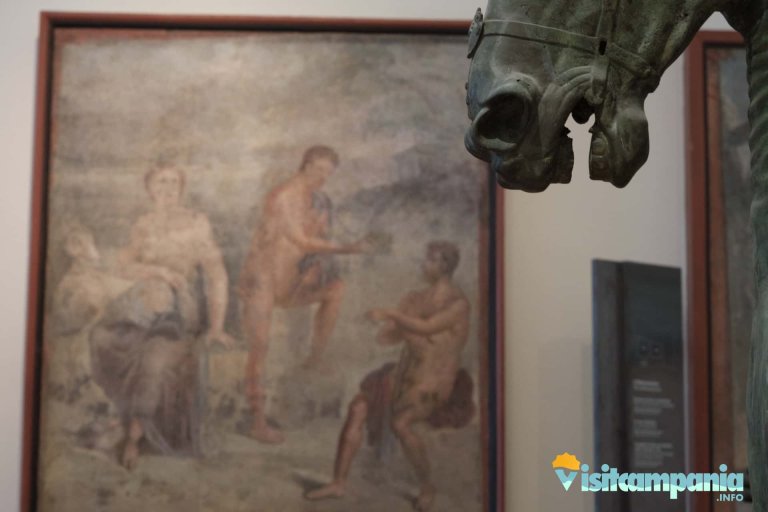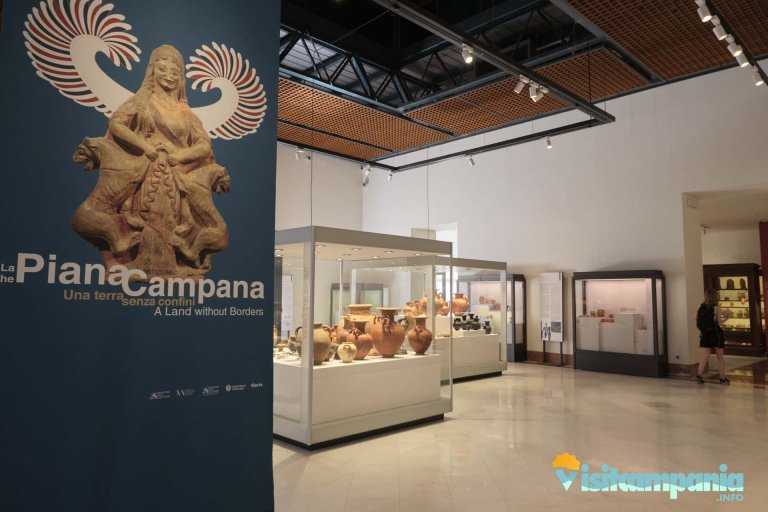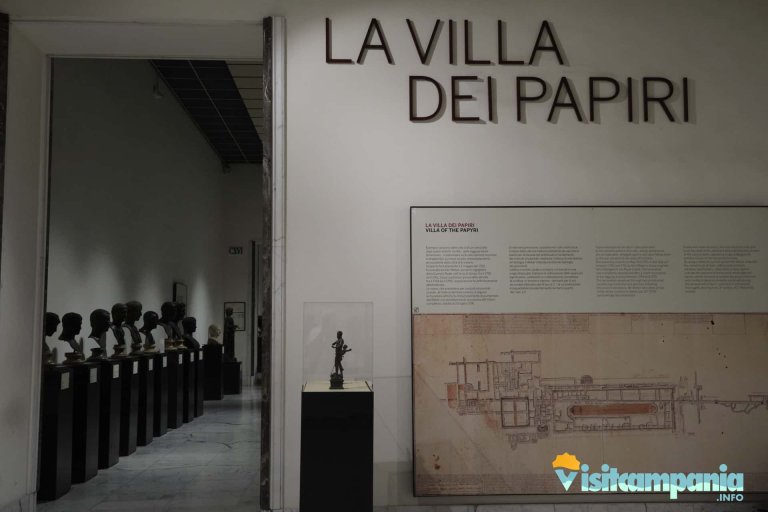The National Archaeological Museum of Naples, archeology relives in the heart of the city

The MANN, National Archaeological Museum of Naples, is located in the city center on the border between the historic center and the Rione Sanità. In 2019, with over 670,000 visitors, it ranked tenth among the most visited museums in Italy, proving the extraordinary historical and artistic value of the collections on display.
Collections that, in large part, are made up of pieces that come from the Neapolitan and Campania territory. This testifies to the close link that the Museum has with the context that hosts it. In addition, the material on display covers a very wide time span, from the Egyptian period (2000 BC) to the nineteenth century AD with modern numismatics.
Thanks to the modern and well-kept fittings and the excellent official website, it allows a conscious and exciting journey through time. Finally, the Museum is often animated by temporary exhibitions, shows, concerts and events, such as the suggestive evening openings, which enhance it as a vivid body of the city to be attended not occasionally (for this purpose an annual subscription has been established).
Brief history of the Museum
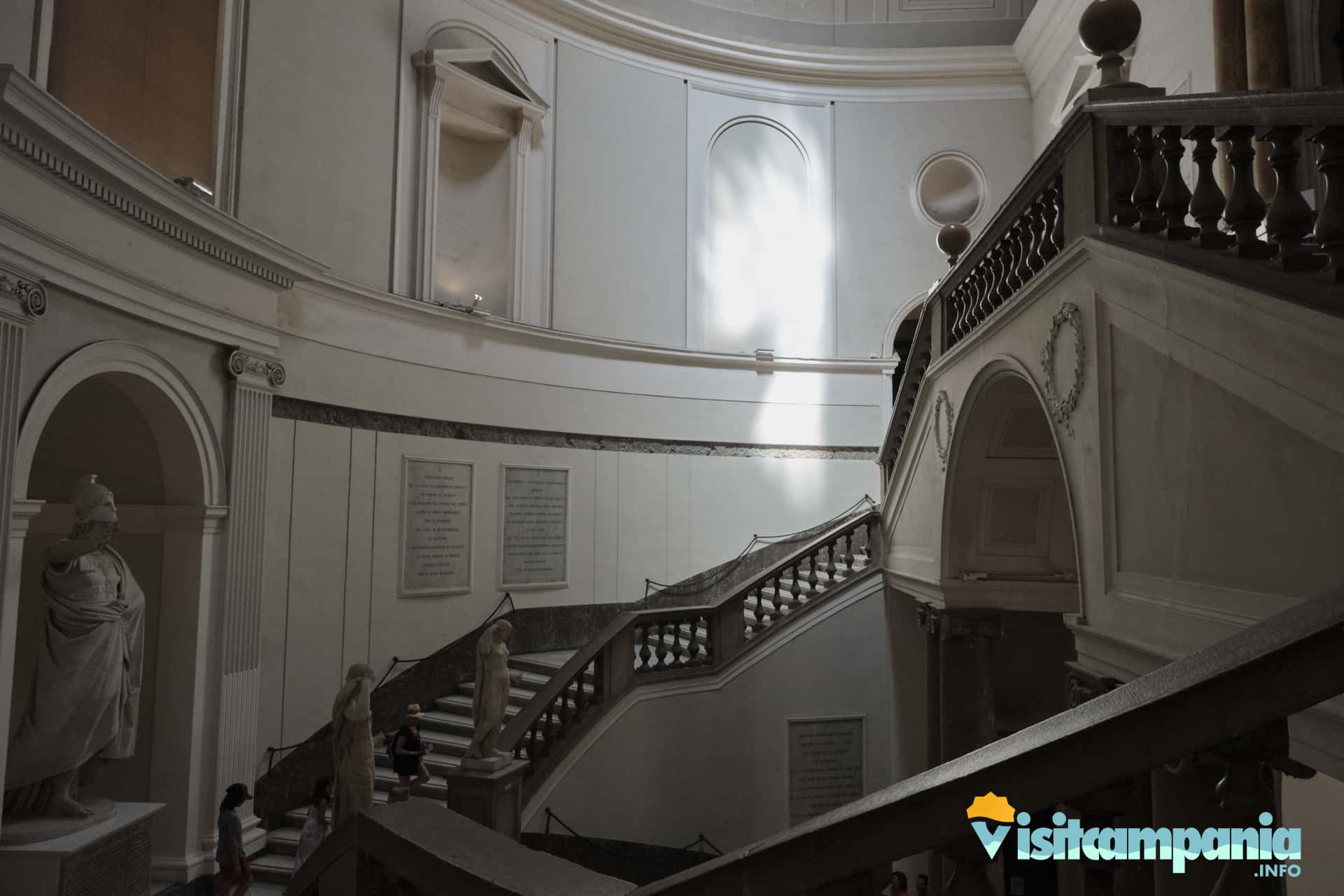
The building that houses the Museum dates back to the late 1500s and was born as a cavalry barracks. We are, therefore, in the middle of the Aragonese era. Subsequently, in 1616 and always in the Aragonese era, it became the seat of the University.
In 1777, when the Bourbons had already taken the place of the Angevins, the building was affected by profound restoration and expansion works at the behest of Ferdinand IV who already had in mind to make it a museum. The domination French (1806-1815) slowed down the plans but it was the French who began the first preparations. Returning to the throne with the name of Ferdinand I, he can, in the end, resume his project and in 1616 the Royal Bourbon Museum was born. It brings together, therefore, in the new museum the Farnese collection and the Vesuvian finds already exhibited in the Royal Palace of Portici and also installs the Royal Library, the Academy of Drawing and the Officina dei Papiri.
In 1860, now defeated the Bourbons, the museum became National. During the Second World War, it was the superintendent Amedeo Maiuri who preserved the integrity of the place and the collections by opposing the German requisition attempts first and then the Anglo-American requisition.
Finally, in 1957, it became the National Archaeological Museum following the transfer to other locations of the Library, the Academy and the Workshop as well as the transfer to Capodimonte of the Pinacoteca.
The MANN Collections
The National Archaeological Museum of Naples houses various collections on four floors. To better enjoy your experience, as long as you do not want to resort to the help of a guided tour, I suggest you download the official map of the museum and integrate it with the information of the excellent official website.
That said, let’s see what awaits us within this treasure chest of art and history.
Epigraphic Collection (basement)
It is a vast collection of epigraphs dating back to the period between the sixth century BC and the II AD It reconstructs the diffusion and linguistic evolution in central-southern Italy.
Urban Archaeology at the Municipio station (basement)
It is a collection of archaeological finds found following the works for the construction of the metro station in Piazza Municipio. Excellently documented, it opens the gaze on the ancient Greek-Roman port of Partenope-Neapolis.
Egyptian Collection (basement)

Established in the early 800s, it brings together pieces acquired from famous private collections (Borgia, Drosso-Picchianti, Hogg and Schnars), a piece of the Farnese collection and various finds from the Bourbon excavations carried out in the Vesuvian and Phlegraean areas. It is the third in the world for importance after that of Cairo and the Egyptian Museum of Turin. Organized into thematic sections, it reconstructs salient and characteristic aspects of Egyptian life such as power, the cult of the dead (there are sarcophagi), religion, socio-economic organization, education.
Farnese Collection (ground floor)
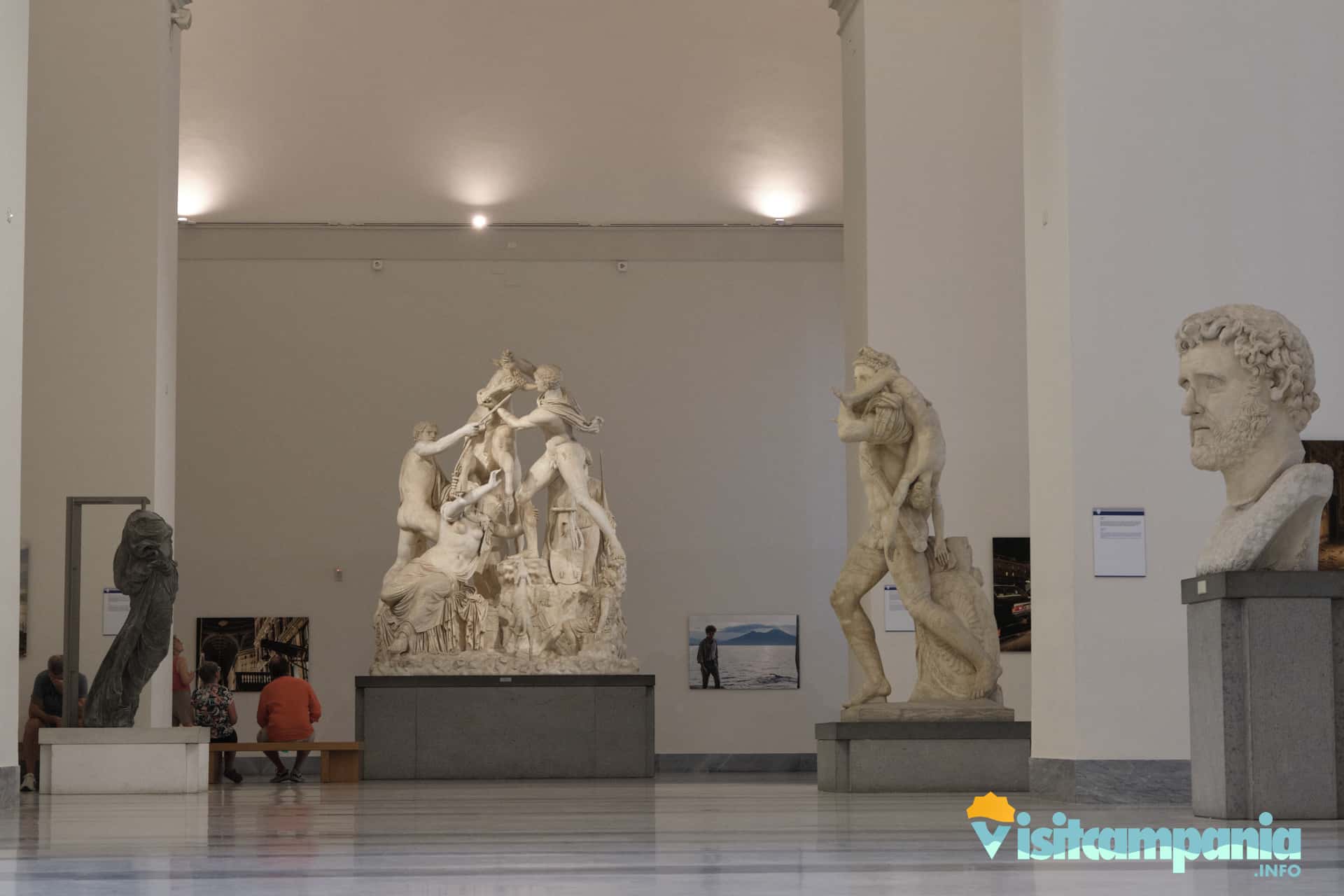
The collection, begun by Pope Pius III in the sixteenth century, enriched over three hundred years and accumulated partly in Rome and partly in Parma, is composed mainly of sculptural works and other antiquities from the Roman era, Renaissance paintings and drawings and a vast library.
It belonged to the famous family of Emilian origin of the Farnese and was then transferred to Naples. It was Charles of Bourbon, son of Elisabetta Farnese and Philip V of Spain, who began in 1731 the transfer, to the Regge di Portici and Capodimonte, of the works originally kept in Parma. To complete the transfer of the works of the Roman collection was, then, Ferdinand IV in 1786.
The part shown here is, mainly, that relating to sculptures and gems. The books are now part of the National Library at the Royal Palace of Naples. The Pinacoteca is exhibited at the Museum and Royal Wood of Capodimonte. Finally, a section of the latter, known as Fasti Farnesiani, is exhibited in the Royal Palace of Caserta.
Gemme Farnese Collection (ground floor)
It is part of the Farnese collection and consists of over two thousand specimens of great artistic quality. Of these, over three hundred and fifty have been found in excavations conducted in Campania.
Numismatic Collection (first floor)
The collection, one of the largest in the world, is divided into six rooms and collects finds from different eras ranging from Magna Graecia to the Kingdom of the Two Sicilies. It consists of pieces from various private collections, including the Farnese and Borgia collections, and finds found in excavations in the Vesuvius area and southern Italy.
Mosaics Collection (first floor)
It collects mosaics from the excavations of Pompeii, Herculaneum and other sites in Campania and covers a time span between the second century BC and the first century AD. An entire section is dedicated to the House of the Faun, one of the largest private homes in Pompeii, which takes its name from the bronze statue depicting a faun found there and now exhibited in this section.
Secret Cabinet Collection (first floor)
So called already in the Bourbon era, when access was allowed only to people of mature age and moral knowledge, the collection consists of over 250 erotic sexual themed finds from the excavations of Herculaneum and Pompeii and some pieces, belonging to the Borgias, of dubious authenticity. Repeatedly subject to censorship, it was even walled up in 1851 so that its memory could be lost. In the fascist era, but censorship lived in different forms until 1971, the authorization of the Minister of National Education was required to access it. In 2000 it was definitively opened to the public but children under the age of 14 must still be accompanied by an adult.
Collection Objects of daily life from the Vesuvius area (second floor)

The archaeological excavations begun in the Bourbon era in Pompeii and Herculaneum, have brought to light countless objects, in terracotta, bronze and glass, of common use. The collection unfolds in five rooms and allows you to see utensils widespread in kitchens, bathrooms and, in general, in homes, reconstructing social, economic and religious customs of the ancient Roman inhabitants.
Temple of Isis Collection (second floor)
Five rooms are dedicated to hosting various finds, mostly wall paintings and frescoes, from the temple of Isis in Pompeii. Discovered since 1764, it testifies to the deep link with Egyptian culture as Isis is the Egyptian Goddess of life, fertility and healing.
Affreschi Collection (second floor)
This large part of the museum houses several examples of Roman pictorial decoration found in the Vesuvian excavations. Many finds date back to the Bourbon excavations when it was customary to remove entire portions of the wall and frame them as a painting. The collection allows you to take a look at the tastes of the time and the most popular themes drawn, mainly, from Greek tragedy, mythology and the stories of Homer. Of particular interest are the objects used for the realization of the frescoes such as squares, compasses and color pigments.
Villa dei Papiri Collection (second floor)

Discovered by chance in 1750 during works for the construction of a well, the Villa dei Papiri in Herculaneum, also known as Villa dei Pisoni, has brought to light more than one hundred sculptures, mainly in bronze. The sculptures, together with some paintings always coming from the villa and two reproductions of a special eighteenth-century machine for the development of papyri, make up the collection exhibited here. In addition, the villa kept over a thousand charred papyrus scrolls, hence the name, containing texts in Greek. The study and conservation of papyri has given rise to the Officina dei Papiri already housed within the MANN and now established at the National Library of Naples.
Magna Grecia Collection (second floor)
The collection collects various artifacts, craters and jewels dating back to the period of Magna Graecia (VIII-III century BC) or the period of colonization of southern Italy by the Greeks. The finds come from the most important cities, Cuma, Paestum, Taranto, and are set up according to a modern approach that facilitates the understanding of scientific and artistic contents. Very impressive is the reconstruction on the floor of ancient mosaics which is why it is required to wear disposable protective shoe covers during the visit.
Model of Pompeii and other collections (second floor)
The second floor of the National Archaeological Museum of Naples MANN also houses a large model of the excavations of Pompeii. Made in 1879 in wood, cork and paper, it reproduces, with exceptional detail, on a scale of 1:100 the situation of the excavations at the time of construction. The reproduction is not limited to the urban plan but goes into the details of the individual buildings up to the frescoes reproduced in tempera on thin layers of lime.
Finally, other “minor” collections are also part of the permanent collections of the MANN, such as the one dedicated to the finds of the prehistoric and protohistoric period and the one relating to the indigenous peoples of the Campania Plain.



